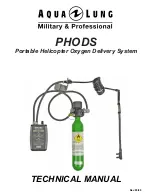
Thermo Fisher Scientific
Partisol 2000
i
and Partisol 2000
i
-D Instruction Manual
3-1
Chapter 3
Filter Handling and Exchange
This section explains how to perform the initial inspection and the
equilibrium and weighing (before and after sampling) of the 47 mm filters
used in the Partisol 2000
i
and 2000
i
-D Samplers. This section also
describes how to insert and remove the filter cassettes in the Sampler, and
calculate the 24-hour mass concentration average, as found in the U.S. EPA
2.12
Quality Assurance Handbook
, Volume II Part II Section 7: Filter
Preparation and Analysis, Section 8 Field Operation and Section 11:
Calculations, Validation and Reporting of PM
2.5
Monitoring Data. Use the
filter log on Page
12-10
for record keeping.
For details, see the following topics:
●
“
Filter Handling and Initial Inspection
” on page
3-1
●
“
Pre-Sampling Filter Equilibration
” on page
3-2
●
“
Pre-Sampling Filter Weighing
” on page
3-3
●
“
Filter Exchange
” on page
3-5
●
“
Post Collection Equilibration
” on page
3-10
●
“
Post Collection Weighing
” on page
3-10
●
“
Computation of Mass Concentration
” on page
3-11
The Partisol 2000
i
can be configured to sample a wide range of ambient
PM sizes, including TSP, PM
10
, PM
2.5
, and PM
1
. It is important that the
proper filter material be used when collecting different PM size ranges as
certain filter materials are required for different types of sampling.
The only filter media currently approved by the U.S. EPA for reference
method sampling of PM
2.5
and PM
coarse
fractions is a 47 mm diameter, 2
m pore-size Teflon filter. These filters can be purchased from Thermo
Fisher Scientific in the following form:
PTFE (Teflon) filters, 2.0 m pore size, box of 50 (10-002322-0050)
You may use other filters or materials for other types of sampling,
depending upon local regulations. For example, the U.S. EPA allows the
Filter Handling and
Initial Inspection
















































